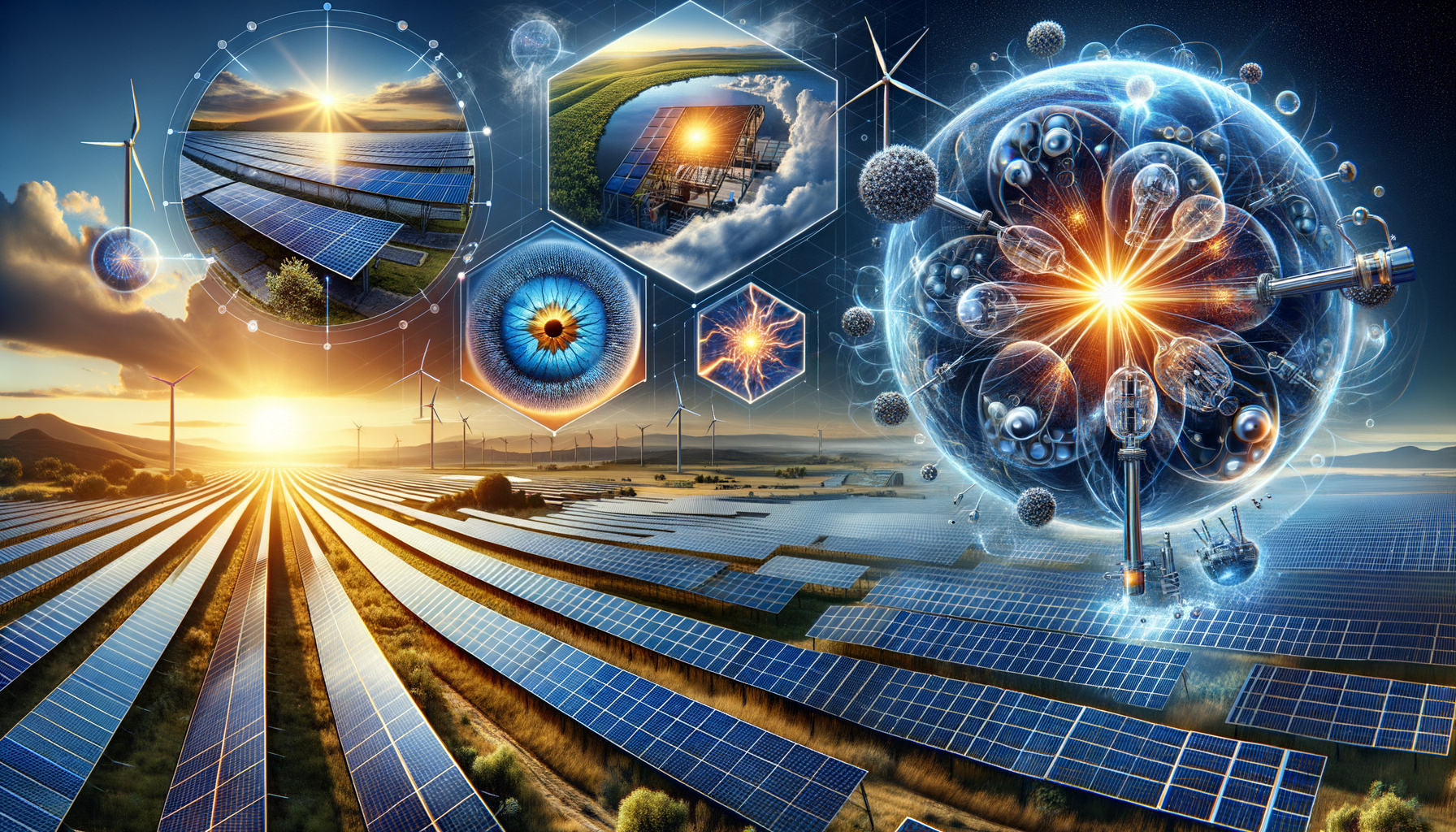Understanding Solar Energy: The Basics
Solar energy, derived from the sun’s rays, is a renewable and sustainable source of power that has gained significant attention in recent years. Unlike fossil fuels, solar energy is abundant and environmentally friendly, making it a viable option for reducing our carbon footprint. The basic principle of solar energy involves capturing sunlight and converting it into electricity or heat. This process is facilitated by solar panels, which are composed of photovoltaic (PV) cells. These cells absorb sunlight and generate direct current (DC) electricity, which is then converted into alternating current (AC) electricity for use in homes and businesses.
One of the primary advantages of solar energy is its ability to reduce electricity bills. By harnessing the power of the sun, individuals and businesses can significantly cut down on energy costs. Additionally, solar energy systems require minimal maintenance, making them a cost-effective long-term investment. As technology continues to advance, the efficiency of solar panels has improved, allowing for greater energy production even in areas with less sunlight.
The growing popularity of solar energy is also driven by government incentives and policies aimed at promoting clean energy. Many countries offer tax credits, rebates, and grants to encourage the adoption of solar systems. These incentives not only make solar energy more accessible but also contribute to the global effort to combat climate change. Overall, understanding the basics of solar energy is crucial for anyone considering making the switch to this sustainable and eco-friendly power source.
Types of Solar Systems: A Comparative Overview
When it comes to solar energy systems, there are several types to consider, each with its own set of advantages and applications. The most common types include grid-tied, off-grid, and hybrid solar systems. Understanding the differences between these systems can help individuals and businesses make informed decisions about which option best suits their needs.
Grid-tied solar systems are connected to the local utility grid, allowing users to draw electricity from the grid when solar production is insufficient. This type of system is popular for its cost-effectiveness and simplicity, as it eliminates the need for battery storage. Users can also benefit from net metering, where excess energy generated by the solar panels is fed back into the grid, earning credits on their electricity bills.
Off-grid solar systems, on the other hand, operate independently of the utility grid. These systems are ideal for remote locations where grid access is limited or unavailable. Off-grid systems rely on batteries to store excess energy for use during periods of low sunlight. While off-grid systems offer complete energy independence, they require a larger initial investment and more complex installation.
Hybrid solar systems combine elements of both grid-tied and off-grid systems. These systems are connected to the grid but also include battery storage for backup power. Hybrid systems provide the flexibility to use solar power during the day and stored energy during the night or power outages. They offer a balance between energy independence and reliability, making them a popular choice for those seeking a comprehensive solar solution.
Components of a Solar Panel System
A solar panel system is composed of several key components that work together to capture and convert sunlight into usable energy. Understanding these components is essential for anyone considering the installation of a solar energy system.
The primary component of a solar panel system is the solar panels themselves. These panels are made up of photovoltaic (PV) cells that absorb sunlight and generate electricity. The efficiency of a solar panel is determined by the quality of the PV cells and the materials used in their construction. Modern solar panels are designed to maximize energy capture, even in low-light conditions.
In addition to solar panels, a solar energy system includes an inverter, which converts the direct current (DC) electricity generated by the panels into alternating current (AC) electricity for use in homes and businesses. There are several types of inverters available, including string inverters, microinverters, and power optimizers, each offering different advantages depending on the system’s design and requirements.
Another critical component is the mounting system, which securely attaches the solar panels to the roof or ground. The choice of mounting system depends on factors such as roof type, location, and climate. Proper installation is crucial to ensure the panels are positioned for optimal sunlight exposure and to withstand environmental conditions.
Finally, monitoring systems are often included in solar panel installations to track energy production and system performance. These systems provide valuable data that can help optimize energy use and identify any issues that may arise. Together, these components form a cohesive solar panel system that harnesses the sun’s energy efficiently and effectively.
Environmental and Economic Benefits of Solar Energy
Solar energy offers a multitude of environmental and economic benefits, making it an attractive option for individuals and businesses looking to reduce their carbon footprint and energy costs. By transitioning to solar power, we can significantly lower greenhouse gas emissions, which are a major contributor to climate change. Solar energy is a clean and renewable resource that does not produce harmful pollutants or deplete natural resources, unlike traditional fossil fuels.
From an economic perspective, solar energy can lead to substantial savings on electricity bills. Once a solar system is installed, the cost of generating electricity is virtually zero, allowing users to save money over time. Additionally, many governments provide financial incentives, such as tax credits and rebates, to encourage the adoption of solar energy. These incentives can offset the initial cost of installation and make solar power more accessible to a broader audience.
Moreover, the solar industry has become a significant driver of job creation and economic growth. As demand for solar energy increases, so does the need for skilled workers in manufacturing, installation, and maintenance. This growth not only contributes to local economies but also supports the development of new technologies and innovations in the renewable energy sector.
In summary, the environmental and economic benefits of solar energy are substantial. By investing in solar power, we can contribute to a cleaner, more sustainable future while enjoying long-term financial savings and supporting economic growth. As technology continues to advance, the potential for solar energy to transform our energy landscape becomes increasingly promising.
The Future of Solar Energy: Trends and Innovations
The future of solar energy is bright, with numerous trends and innovations on the horizon that promise to enhance its efficiency and accessibility. As technology continues to evolve, solar energy systems are becoming more advanced and integrated into our daily lives.
One of the most exciting trends in solar energy is the development of solar storage solutions. As battery technology improves, the ability to store excess solar energy for use during periods of low sunlight or power outages becomes increasingly feasible. This advancement is crucial for expanding the use of solar energy in both residential and commercial settings, providing greater energy independence and reliability.
Another significant trend is the integration of solar technology into building materials, such as solar roof tiles and windows. These innovations allow for seamless incorporation of solar energy systems into the design of homes and buildings, enhancing their aesthetic appeal while maximizing energy production. As these technologies become more affordable, their adoption is expected to grow rapidly.
Additionally, advancements in solar panel efficiency and manufacturing processes are driving down costs and making solar energy more accessible to a wider audience. Research into new materials, such as perovskite solar cells, holds the potential to revolutionize the industry by offering higher efficiency at a lower cost.
Finally, the rise of smart grid technology and the Internet of Things (IoT) is enabling more efficient energy management and distribution. By connecting solar energy systems to a network of smart devices, users can optimize their energy consumption and reduce waste, further enhancing the benefits of solar power.
In conclusion, the future of solar energy is filled with promise and potential. As innovations continue to emerge, solar energy is poised to play a pivotal role in the transition to a more sustainable and resilient energy landscape.








